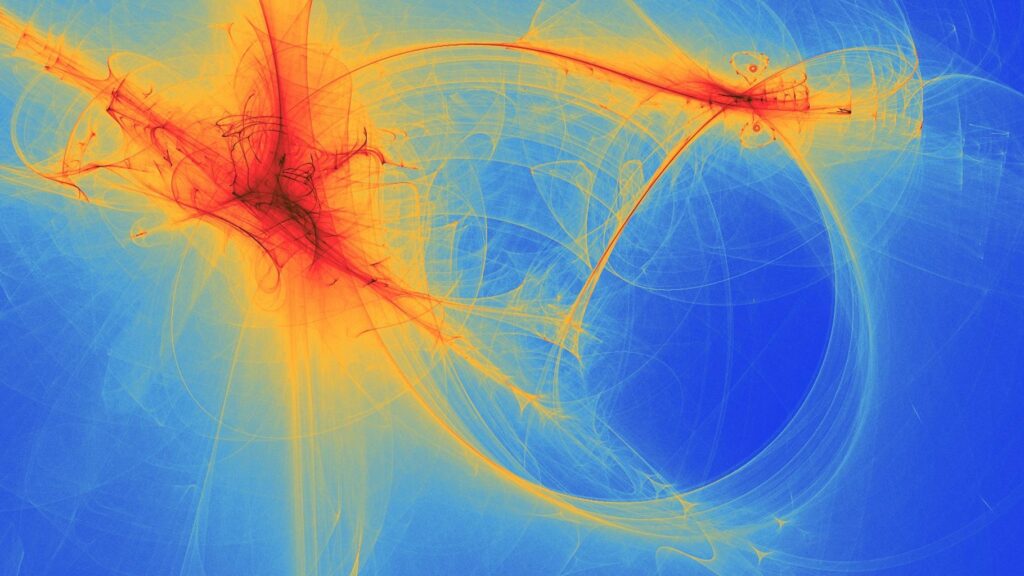Is the Narrator Nothing or Everything?

Sometimes I disappear while reading. I try to tuck away this neck, these legs, and be my eyes for a while. I’d like books to pass through me like a lending library. I feel if I read broadly and enough, I could spill over into writing. What I’ve taken in me would meld with what I had in me before, and all my good and bad—my unlikeable protagonist and unreliable narrator—would channel out, and there I’d be, on the page.
Over the course of my Creative Writing MFA, I’ve grown more interested in the process of writing my novel than I am in writing it. I created a narrator to do the words while I fumble with ideas. These ideas are not content-based, but context. How much of me is she? Is the best writer everything, nothing, or one specific thing, a person, a voice? Autofiction has readjusted my sense of personal possibilities for the novel. A heady, detailed, and intimate account of a life lived and written doesn’t have to be about anything because it’s about everything—all the things experienced through one consciousness. Since the project of the autofiction novel is often the writing of the project itself, the reader almost becomes a writer too.
Removed from the world in this cozy two-year program, I am the closest I will ever get to becoming the page. I came to my Creative Writing MFA naïvely. I thought this was where writers were built. I thought we’d Frankenstein ourselves; I was excited to see what kind of monster I would make me. But when my peers presented themselves according to the sophisticated subjects they were interested in—absence, or desire, or absence as desire—I could only say “this. You’re not here for this?” I didn’t come to writing school to pursue a topic, but to pursue writing, as a craft. From one sentence, I wanted to build the next. I came here to dress myself up in literature. If words were my bones, their cadence my muscle, my body’s movement would be voice, pure voice (okay, my voice). I thought if I became everything, then I wouldn’t have to be something.
A year and a half in, I can tell you my thesis novel is about a relationship between two women—stop there. Not about a relationship between two women, but through it. Their narrator is the persona the women created in art school; she is the voiced entity of their relationship. Autofiction-style, she openly struggles as she composes her novel. What the heck is an omniscient narrator? How is she meant to represent other people’s truths? She cannot tell her story because she doesn’t have one. She’s the auto without the fiction.
In her 2019 book Meander, Spiral, Explode: Design and Pattern in Narrative (Catapult), Jane Alison explores how natural forms and patterns might act as more truthful structures for our narratives. Aristotle’s dramatic structure privileges plot, but we may better be able to express an embodied experience of the world by replicating ways in which we already move through it. Like me, and many of us who’ve been in relative isolation over the past couple of years, my narrator thinks through the world, rarely seeing her own shadow. It’s why I came to writing: most days I feel more like a thought process than I do a person.
Before my MFA, I taught middle school, where my role was to facilitate inquiry. The metaphor for a teacher used to be a pitcher filling up empty brains like cups. I was maybe a cable, or the pulse through the electrons, either passed or bumped along, no one’s sure (not even someone charged with teaching electromagnetism to twelve-year-olds). A good teacher, especially in the language immersion program where I worked, aimed beyond acquisition, to transformation. Students didn’t just learn French; they learned in French. A successful student studied from the outer layer of themselves, looking in. If I asked them what they were interested in, students would have had to say “this.” Or, “ça.”
I came to the point in teaching when I realized I knew nothing. I knew no things, only their contexts. I was an expert in teaching a student to understand and think critically about a message, but had avoided the messages myself. Ask me to tell you about the ancient civilizations I taught for five years. The stages of human evolution? Not just gone; never there. Ask the children! They were the ones who did the projects. It’s the most meta of professions, one that feeds on itself, always wanting more and more.
What a comfort to learn in an MFA fiction workshop that the third-person omniscient narrator is a camera. It can sit close on a protagonist’s shoulder, or scan down from above. This distance from the character being narrated is called psychic. We’re led to believe it can penetrate the mind of the protagonists, much as it does the reader’s. With the camera as tool, this whole game of literature happens in and between heads, and is controlled quite competently by a puppet I’m in charge of. An omniscient narrator is generally neutral. Unless it’s someone (inherently, for some reason, unreliable, because it means they have a motive for telling), it’s no one. We sometimes mistake it for the author, but it’s the implied author. This camera metaphor confirmed my belief that a writer’s thoughts can leave their body and enter a story.
So if a narrator’s the eyes, where’s the head? Where in the novels I write do my thoughts live? Literary critic James Wood identifies the term “free indirect style” as the bridge between the narrator and protagonist (How Fiction Works, Farrar, Straus & Giroux, 2008). It’s those moments where you’re unsure if the idea belongs to the voice telling the story, or the character living it. Wood points out this space is often ambiguous and “simultaneously closes that gap and draws attention to its distance.” This contentious space, primed for judgment and manipulation, sounds exactly like my inner experience of the world. Wood calls it the “basic novelistic tension: Is it the novelist who is noticing these things or the fictional character?” In the classroom, I was a channel for inquiry; in my novels, it only makes sense I’d be interested in the energy between the teller and the told.
In autofiction, where protagonist and narrator are collapsed into the first-person “I,” the novel’s tension exists in one mind. Whose mind? Well, it’s the mind of the writer’s, isn’t it? Though Roland Barthes announced the “Death of the Author” in the 1960s, the writer as character seems to have had a revival. With each of us operating as our own main characters, we don’t want to separate the writer from the written. It makes more sense to everyone if that content I wrote about is mine, if the identity of my character is the way I too have experienced the world. But what about those of us whose fascination for literature lies not in the content, but its delivery? What about those not moved by the topics we read, but by the voices who write them? Who are us writers who are not what we’re writing about?
Mikhail Bakhtin, a twentieth-century Russian literary critic, identifies the novel as essentially “polyphonic” in nature. In other words, the novel is told by more than one voice. While this sounds like an argument for stepping out of our minds and into others’ mouths, Bakhtin is suggesting that in every speech act there is a double action. There is the thing being said, and also something else. By writing into the ambiguous space between my narrator and my characters, I’m allowing myself room to explore what it is I’m doing here, in their novel. Maybe some people start with content and make meaning. Can I do the opposite? Start with why and end with what?
In Craft in the Real World (Catapult 2020), MFA graduate and novelist Matthew Salesses urges the writer and writing teacher to take craft out of the classroom and return it to “its cultural and historical context.” Speaking directly to those, like me, who see craft as a world in itself, Salesses lays it out handily: “if writing is not beholden to culture, then (the writer) is free from the constraints of actually being a part of (or responsible to) the world in which he and his readers live.” Well, this is exactly what I had been trying to do. I was getting cozy with my words, sucked into what Salesses calls craft’s “imaginary vacuum.” When Salesses implores us to reject the “mystification/mythification” of craft, he is asking us to step out and consider our choices. Back to Jane Alison: what marks do we leave as we move through our novels? When we believe that writers’ ideas drop down from above or shoot up from below, we also believe some people can write outside of culture. And who can do that? Those in the dominant culture, who’ve never not seen themselves in literature, and consequently think they’re neutral, think they’re craft.
Writing and reading aren’t easy tasks when you consider the choices that go into them. For the content around me to take shape when I’m in a book, I have to create it through my senses. I have to carefully see, feel, hear the worlds I’m reading; I have to truthfully (to my experience, or a plausible imagined one within the world I’ve created) represent them in my writing. Christopher Castellani, in “The Art of Perspective: Who Tells the Story” (Graywolf 2016), points out “the relationship between the author’s unique background and status to that of her narrator(s)—and characters in general—is, to put it mildly, highly charged.” It is in that dense space of decision-making Castellani calls the “narrative strategy” where a word here or an ambiguous statement there can affect the reader’s understanding of who’s telling the story and why. If voice is the tool of narrative strategy, then it seems to me the narrator can be both frame and filler. The white vacuum of craft we thought novels were operating in may have been full of pixels all along. Books are read and written by people who live in the world; therefore, books are in the world. The choices that are made in them are choices of the world. Even if this exchange of reader and writer happens in the head, the head is on the body, and the body is in the world. Writing is made not in the head, but in the world.
Recognizing that craft is a structure, Salesses proposes the following project: “the fiction writer must break down what she thinks she knows about her craft in order to liberate it.” Say I think I know a narrator. She is the relationship central to my novel. Rather than simplifying her into being me, or an imaginary vacuum—instead of problematizing her unreliability, or resolving her motives—could I step in and embody her? I don’t know if tension is a real place, if the energy between us is always something felt, but I know I am real, and I know you are. The narrator is the reach between us, reader and writer. It is a collective space. It is ambiguous because if it was one thing, and you were too, then it could be empty, or full. Instead, it’s everchanging, it’s unknowable. It’s a topic we can investigate, like absence, or desire.
So say psychic distance isn’t psychic at all, but physical. Then the metaphor of the camera has failed us. A narrator is the writer’s body in the novel. It is following a protagonist down a dark alley; it is dodging into a hedgerow; it is pulling two people apart. Let’s call the camera what it is: one of those old, clunky cameras from the dawn of photography. It takes up more space than a person. The subject positions themselves to be assessed over the span of several moments. They try to stay the same, for as long as it takes to develop them. That was what the omniscient narrator was: a power trip.
In my second year of this MFA, when I’m asked what I’m interested in, I still say writing. Not writing itself, but writing about writing. I’m interested in writing about writing through, can I say it again, writing? I’m writing the amateur craft book of a narrator whose moment of glory is also her destruction. Her writing of the novel is her purpose. She is the message and its content. And me? Buoyed along in a Creative Writing MFA program to the perplexing precipice of a non-career, Seabird will help me process what my innards are made of. She does so in real-time, in camera. While the MFA asks us to turn ourselves into novels, maybe what we need to do is turn ourselves into writers. Write through us—to the back of literature, not where the dusty winter coats are kept, but where the door opens to a field of white snow. Walk into it: it’s not nothing. It’s crunchy. Here it’s soggy. It’s molecules of water, it’s matter.
Let’s write until our relationships with our novels become our novels. And do it all together. Why else did we come to a school, if not to work collectively? Let’s share our ambiguity and imagine a new structure from which to write. It will probably not be a camera, but something closer to the internet. Or say: our bodies. I’m interested in what would happen if we did let craft out—of our individuality, of our institutions. How far could it go? Could it escape the book entirely? Could it return to a place of innocence, of play? Maybe psychic distance is the space the MFA, in its broadest sense, could provide: both in the world and out of it, the writer is given a pause between themselves and someone else. A pause that could be filled by all of us, the craft collective.


